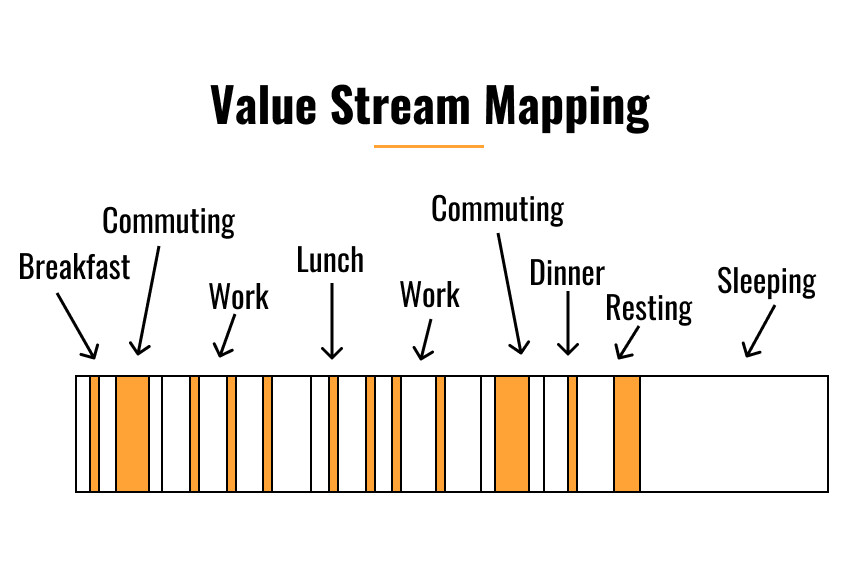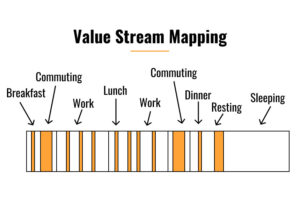Identify Your Waste in Your Routine
You don’t find time to execute your plan and work on your project.
Maybe you are wasting time inadvertently.
“The most dangerous kind of waste is the waste we don’t recognize” – Shigeo Shindo
Let’s imagine a typical day:
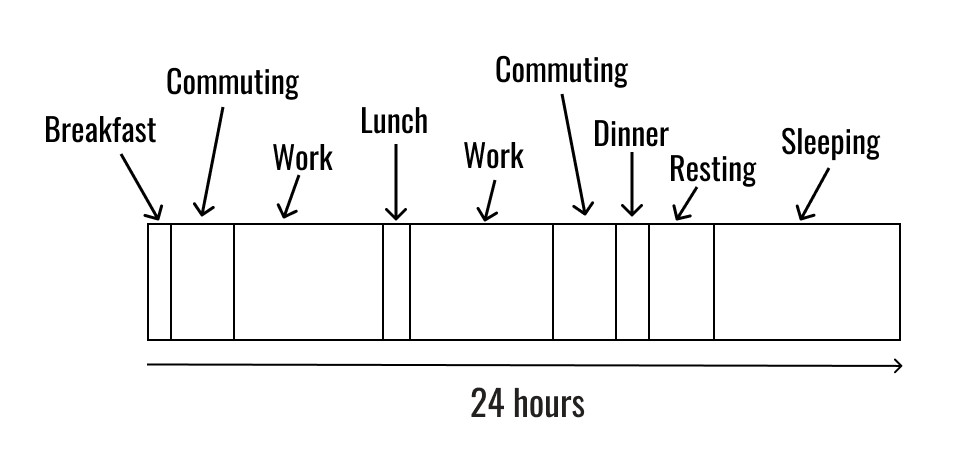
This typical day looks very full, you don’t seem to have free time to work on your project.
Let’s dig a bit deeper:
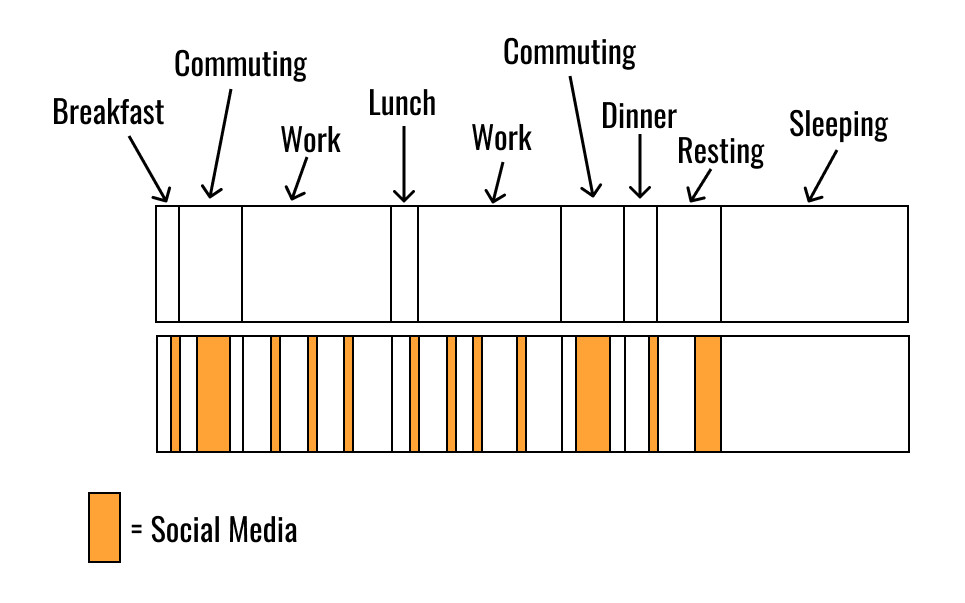
According to Statista, in the USA, people spent on average 142 minutes on social media and 1 hour commuting per day.
By writing down the details in your daily routine, you will be able to measure the time lost daily.
Let’s imagine that you live your typical day 365 days per year, you spend 1 hour commuting and 2 hours resting. So if we multiply by 365, you spend 365 hours commuting and 730 hours resting per year.
365/24 = 15.2
730/24 = 30,4
You spend 15 full days commuting and 30 days resting per year!
How could you use these 1095 hours more productively?
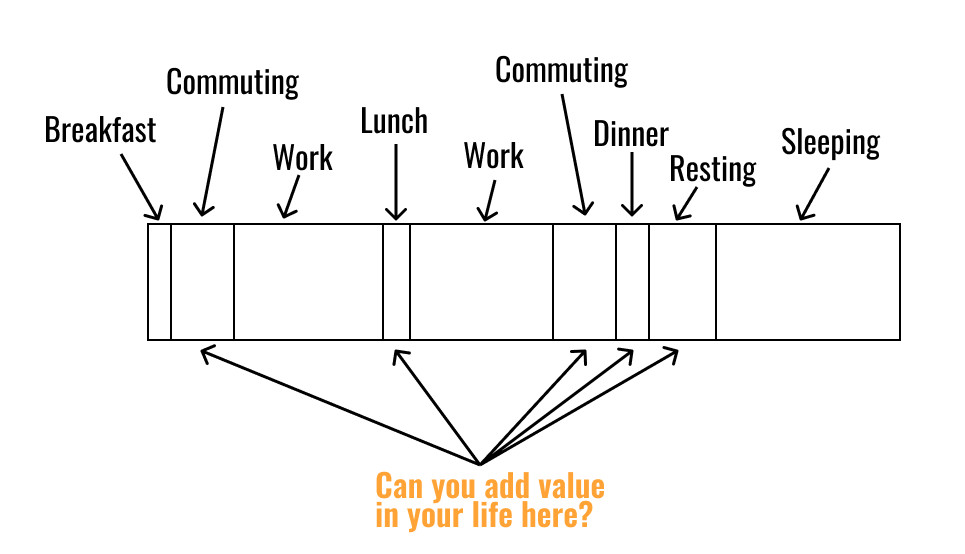
How to Reduce Your Waste
“I have no choice, I must take the car/metro to commute to work. I also want to relax and rest.”
You have obligations and you are not a robot, but you still can find some time to add value to your life.
Define your goal
What would you like to accomplish in the short term or long term? What is your plan?
Without aiming at a goal, you will hardly reach anything, that’s why you are wasting your time.
Without a purpose, you let your habits and pleasures guide your decisions and actions.
Now that you have a goal and have identified and measured your waste, you can plan to reduce them.
While commuting, you can read a book or listen to a podcast. Instead of browsing social media, you can use an app to study. You can replace watching Netflix/Youtube with time working on your project.
Prepare several meals in advance so you cook and wash the pan/oven only once.
Use your imagination to find a way to add value to your life.
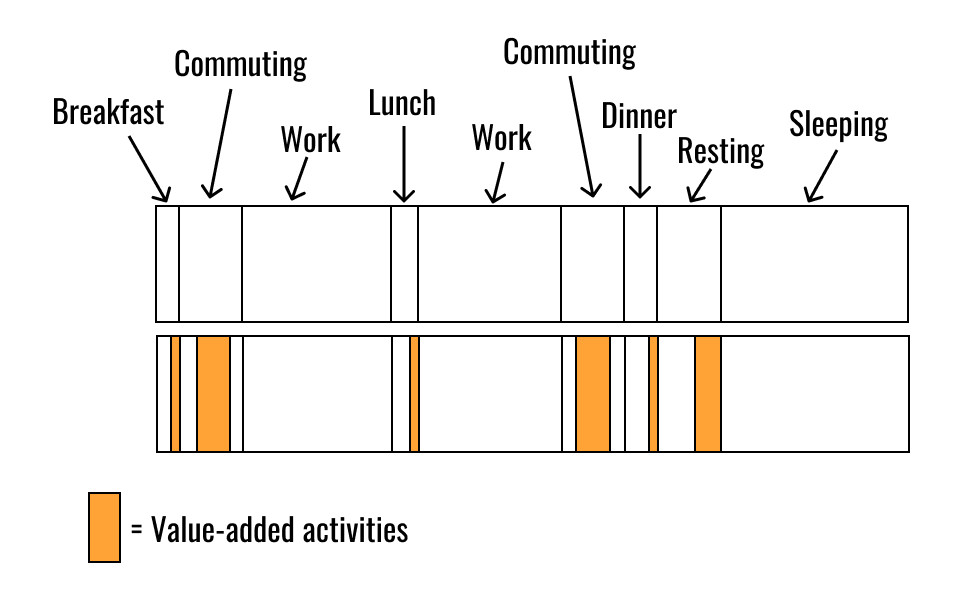
Reducing your sleep is a false good idea
It can be tempting to reduce your sleeping time.
Sleeping is value-added time, you can check this book Why We Sleep to convince you:
- Two-thirds of adults throughout developed nations fail to obtain the recommended eight hours of nightly sleep.
- Routinely sleeping less than six or seven a night doubles your risk of cancer and increases diseases such as Alzheimer’s, stroke, and obesity.
- Sleeping has not one unique function but a multitude of health benefits that promote survival (ability to learn, memorize, make logical decisions, prevent infections, balance insulin, regulate appetite).
Some people can sleep only 5 hours because they are born with a specific DNA. They don’t require 8 hours of sleep to remain healthy.
So if you are not already sleeping over 8 hours per night, you should not consider reducing your sleeping.
Some motivation gurus may tell you to wake up at 4:30 a.m. to work on your dream.
This is not sustainable, lack of sleep will impair your memory and put your health at risk.
It is not worth it.
Compared with a factory, machines also need “maintenance”. A breakdown will have much more cost on production than regular preventive maintenance.
How to Sustain Your Improvements: Habits + SDCA
You may be able to maintain this routine for a few weeks then you may start to backslide and lose the momentum. Slowly you come back to your old routine before the improvements.
Build your habits
A habit is an automatic behavior that frees your mind for a new task. You have an automatic process to solve a repeated problem.
Habits do not restrict freedom. They create it. With habits, you have more free-thinking and creativity for new tasks.
The process of building a habit can be divided into four simple steps: cue, craving, response, and reward:
- The cue: It is a signal that triggers your brain to crave a reward.
- The craving: It is the motivational force that will push you to act.
- The response: It is the habit, it should be doable to become repetitive.
- The reward: Tt is the reward that relieves you from your craving and teaches which habits are useful.
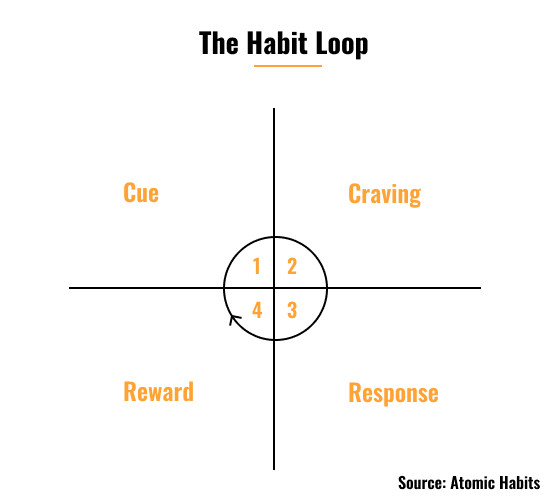
For example:
Cue: You sit down in your car.
Craving: The silence is awkward, you want to put some sound.
Response: Instead of putting on the radio, you can put on a podcast on the topic you want to learn.
Reward: As you feel satisfied with your effort and improvement, your brain gives you a dose of dopamine to reward your good behavior.
Sustain your improvement with Standardize-Do-Check-Act
In manufacturing, standards have these key features:
- represent the best, easiest, and safest way to do your job
- offer the best way to preserve know-how and expertise
- provide a way to measure performance
- show the relationship between cause and effect
- provide a basis for improvement
- For improvement, standards provide objectives, a basis for training and diagnosis, and a means for minimizing variability.
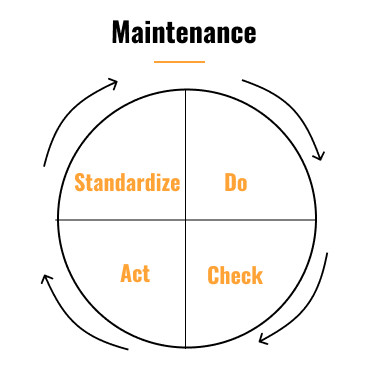
For example, when I go to the gym for working out, a coach teaches me how to use the machines and have a perfect movement.
Standard: I write down my routine in my notebook. I precise the exercises, the weight, the number of repetitions, and the rest time between each series.
Do: Then, I just need to execute my routine.
Check: After the workout, I compare what I actually did with my routine.
Act: Then I adapt my routine for the next time.
You are in control
Set your own standards that are easy for you to sustain and repeat. The mistake would be to aim too high too fast without building the habits in your routine.
You set yourself your goal, you defined your own VSM and standards.
If it is too hard, you can negotiate with yourself as if you wanted the best for yourself.
Keep it simple but challenging, not too hard and not too easy, and improve over time.
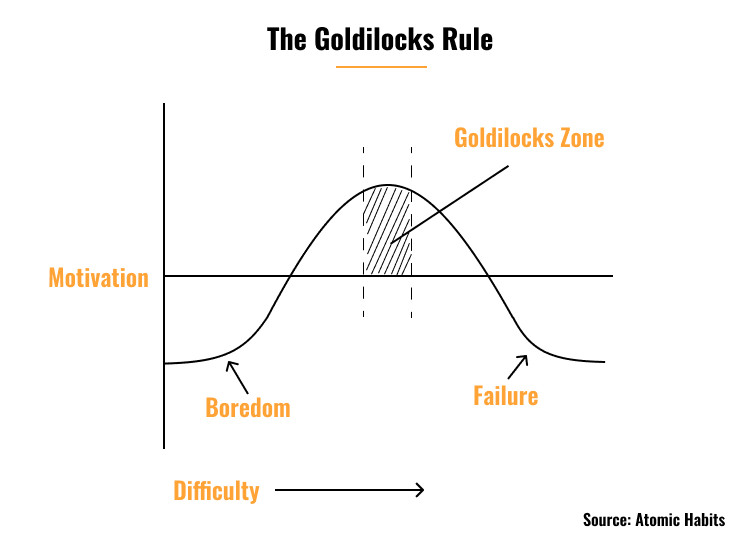
If after all these ideas to help you and you still waste your time, it is probably because your goal is not compelling enough to you.

